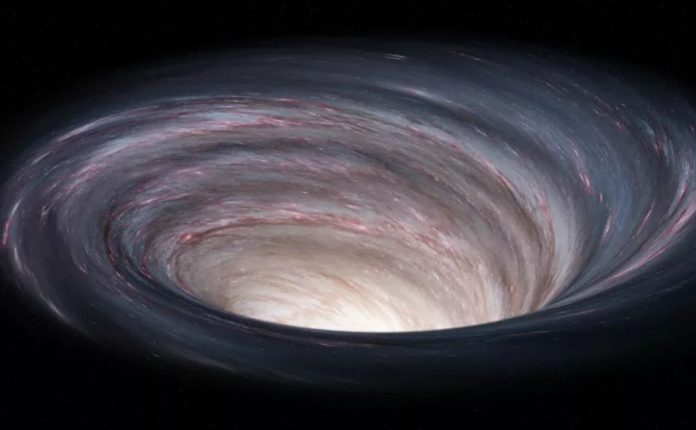Just over two years ago, one of the brightest X-ray bulbs in the sky began to dim. Scientists have not yet been able to determine the reason behind this rare cosmological phenomenon, but a group of scientists from the University of Michigan is trying to solve the mystery.
In the spotlight is the black hole of the binary star system GRS 1915 + 105. This cluster, located 36,000 light-years from Earth, is composed of a normal star and the black hole in question.
- Does This Mean We Stopped Being Animal and Started Being Human Due to ‘Copy Paste’ Errors?
- The One Lifestyle Choice That Could Reduce Your Heart Disease Risk By More Than 22%
- Aging: This Is What Happens Inside Your Body Right After Exercise
- Immune-Boosting Drink that Mimics Fasting to Reduce Fat – Scientists ‘Were Surprised’ By New Findings
- Gun Violence in America: What They Don’t Talk About at the Debate
The mass of the latter is 10 to 18 times of the Sun, which makes it the second heaviest known black hole in the Milky Way. In terms of mass, it’s only behind Sagittarius A*’s supermassive black hole, located in the center of our galaxy.
However, from the second half of 2018, the brightness of the black hole of GRS 1915+105 began to dim. At the beginning of the following year, the light dimmed, even more, a phenomenon that left scientists baffled, as nothing like this had been observed before.
Researchers at the University of Michigan tried to find the cause of the rare phenomenon. Their theories have been published on Arxiv in a new study that has yet to be peer-reviewed.
Although a lot of light is still emitted from the event horizon – the spherical region around the black hole – and its accretion disk – a disk of gas and dust revolving around the celestial object – that glow no longer reaches Earth like it used to.
Because no existing telescope can record the details of what is happening in the distant system, researchers had to make inferences about how light from GRS 1915+105 changed between 2018 and 2019.
Black holes located in systems with large stars are sometimes dimmed because stellar winds from their companions can push clouds of gas in front of their lights.
- Does This Mean We Stopped Being Animal and Started Being Human Due to ‘Copy Paste’ Errors?
- The One Lifestyle Choice That Could Reduce Your Heart Disease Risk By More Than 22%
- Aging: This Is What Happens Inside Your Body Right After Exercise
- Immune-Boosting Drink that Mimics Fasting to Reduce Fat – Scientists ‘Were Surprised’ By New Findings
- Gun Violence in America: What They Don’t Talk About at the Debate
“In the case of GRS 1915 + 105, the companion star is low mass and does not have massive stellar winds to create the obscuring gas observed,” detailed Mayura Balakrishnan, lead author of the study.
Scientists believe that the dimming of the system’s brightness is due to something blocking this light. However, the nature of the object responsible for the phenomenon is “difficult to discern,” says Balakrishnan, so the exact cause of the phenomenon remains a mystery.
